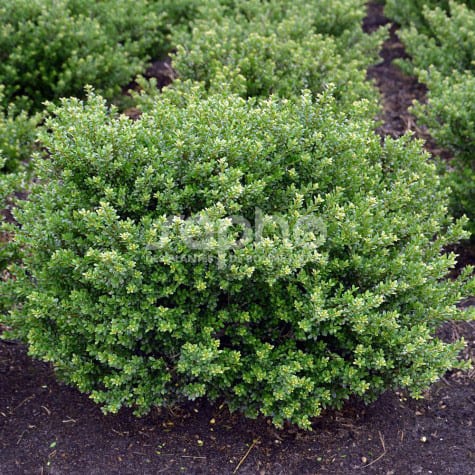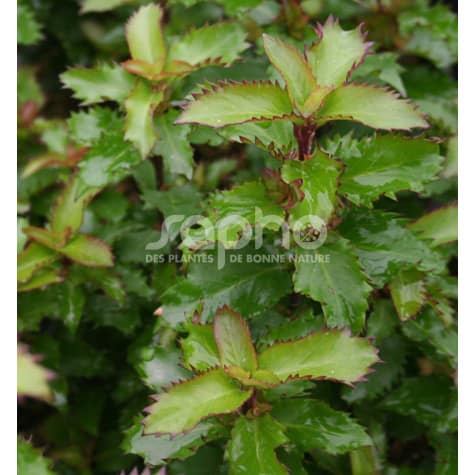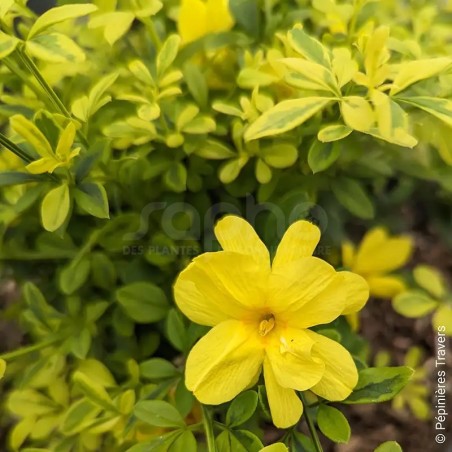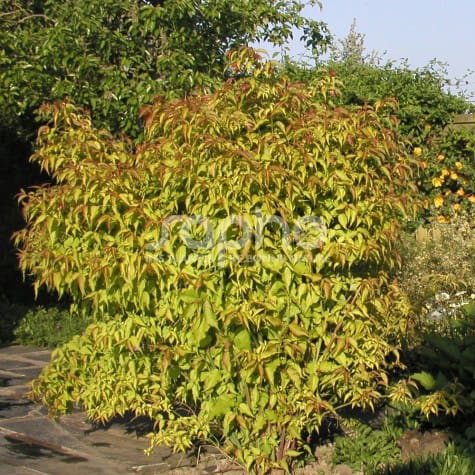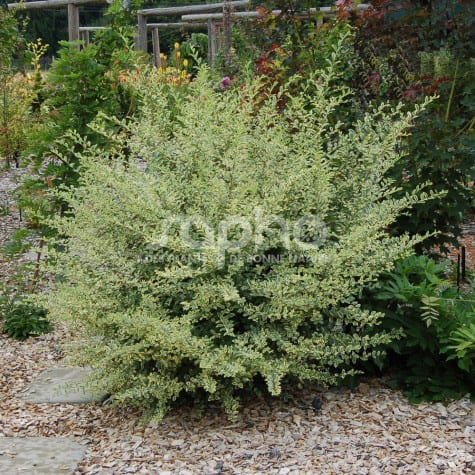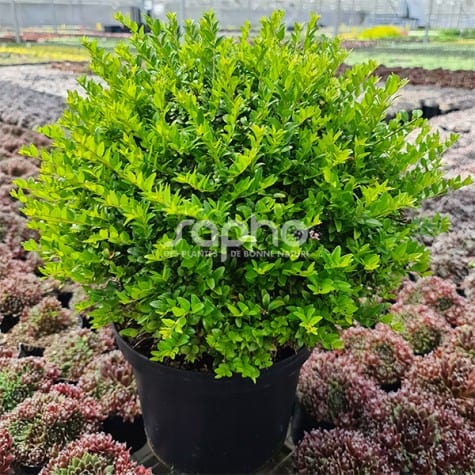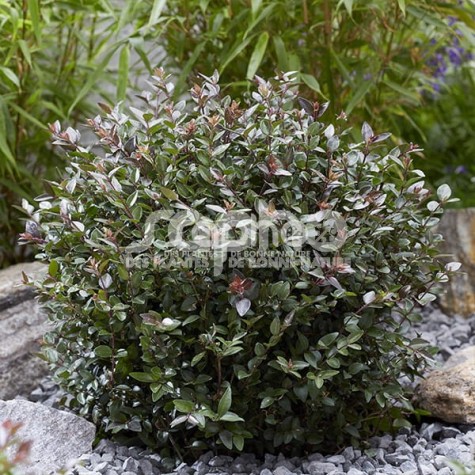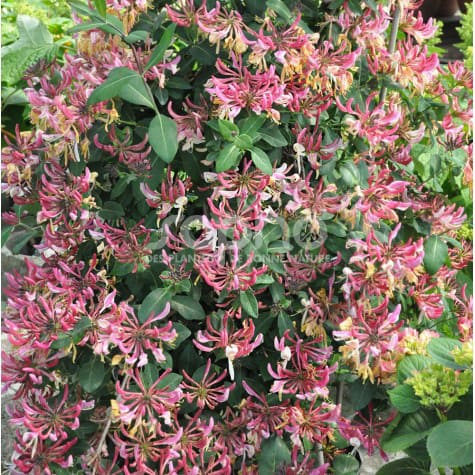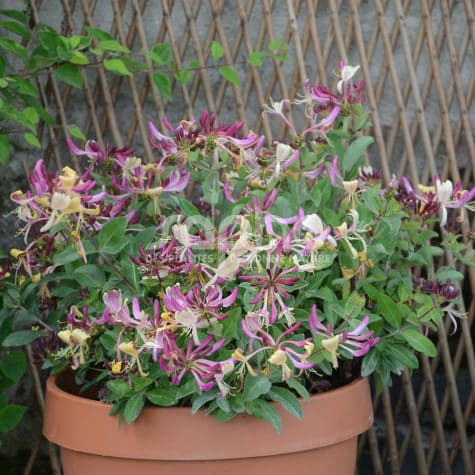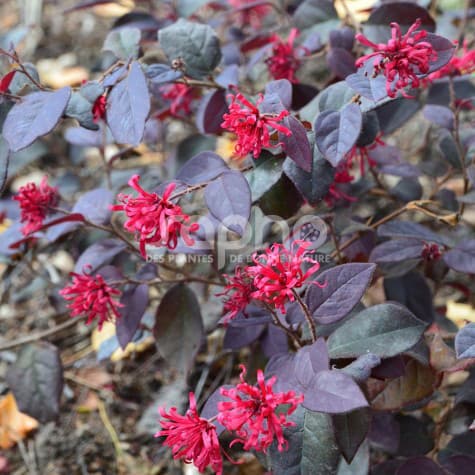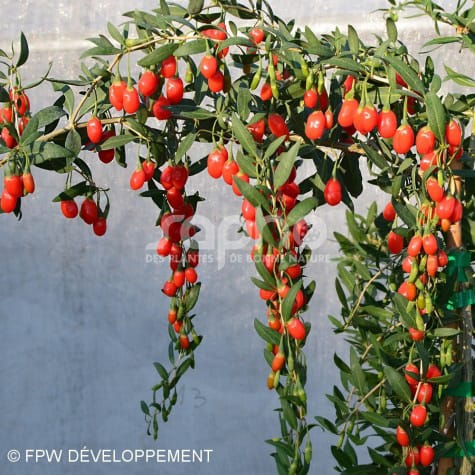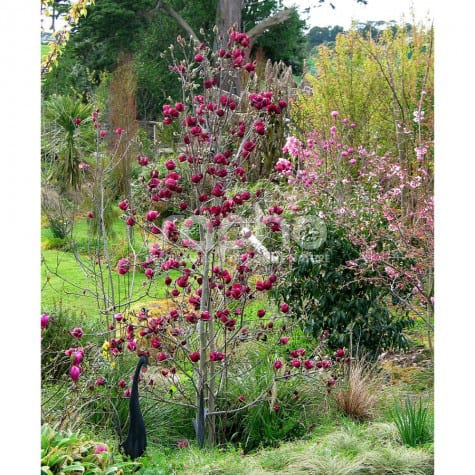An alternative to box in oceanic and continental climatesIlex crenata 'Glorie Dwarf' is a dwarf holly with small dark-green leaves and a naturally ball-shaped habit. Responding well to pruning, it can be used as for all boxwoods: in topiary, as borders or for low hedges. Extremely resistant to cold it favours soils that are rich in humus and which remain cool in summer. It is recommended for use in oceanic and continental climates that remain fresh in summer. For drier climates the compact Pittosporum tenuifolium, « Silver Ball » and « Golden Ball » would be more suitable.
Where to find Sapho plants ?
For young plants
You will find the names of Sapho-licensed nurserymen at the bottom of each variety sheet.
For available plants
Please ask your nursery suppliers.
Each licensed propagator is free to market his young plants to all his customers.
Categories
Menu
All our varieties
A cute little holly.This holly variety has a dense, well-branched shape and is slow-growing.It is a male forn (no fruit), the white flowers in spring are of no decorative interest but are useful for the pollination of other varieties.The dense, oval, spiky foliage is dark green and sometimes turns purple in winter. It is resistant to the cold.MAGICAL® Little Rascal can be planted in beds or solitary. Its naturally rounded shape is very suitable for contemporary landscaped areas, notably in small gardens to which it adds a permanent plant structure. It can also form a low hedge or a border for beds. It is also suitable for pots.
A shrubby jasmine that brightens up the garden
Bright, variegated evergreen foliage all year round
Early and generous primrose-yellow flowering
A robust, low-maintenance shrub with good resistance to drought, cold, wind and limescale, undemanding and easy to grow
A flexible shrub, that can be planted on smooth surfaces, mixed in with shrub branches or grown in pots
Golden pheasant berryThis vigorous variety of lysteria is of dense and very ramified growth, with fine and graceful wood. Its foliage is semi-evergreen in regions with mild winters and is particularly remarkable throughout spring and summer: the young shoots have a red tint, the foliage stays golden for a long time, turning light green in summer.In July- August, GOLDEN LANTERNS are covered in abundant clusters of flowers with light pink petals turning white with very decorative dark red sepals. They make place for numerous, very ornamental dark red fruits, with purplish black berries. They last long into the autumn and are appreciated by birds.This bright selection should be planted individually, in groups or in a mixed hedge.
Luminous shrub, MUSLI® is noticeable from a distance.MUSLI® was discovered and selected as a seedling of Ligustrum ibota in Switzerland.Leaves are opposite, evergreen to semi-evergreen and remarkable for their lasting variegation, highly resistant to the sun. The young shoots are light yellow, turning white with time. The foliage is more or less variegated, light grey-green with creamy white edges, sometimes so wide that they cover the entire width of the leaf.When young, the shrub is of bushy and spreading growth with arching branches. Then MUSLI® forms an even bush with a dense centre. It is of moderate growth.In early summer, the shrub will produce clusters of fragrant white tubular, nectar bearing flowers, turning into blue-black berries, which attract the birds.This shrub tolerates cutting back and is suitable in topiary, in a monospecific or a mixed hedge. Together with other shrubs or in a pot is is very remarkable by its particularoy bright foliage.Trophies: Bronze medal at PLANTARIUM 2011 (Boskoop - NETHERLANDS)
A shrubby honeysuckle with evergreen foliage
GARDEN CLOUDS® Green Breeze is a variety of shrubby honeysuckle more resistant to cold than the typical species (-18° C).
Its dense habit, fine, glossy, light-green leaves and ease of cultivation make it easy to prune and use in topiary.
It adapts to all soils (unlike Ilex crenata) and is faster-growing than boxwood, with no health problems.
Use in the ground, borders, low hedges or pots.
A shrubby evergreen honeysuckle with magnificent purple shoots
GARDEN CLOUDS® Purple Storm is a variety of shrubby honeysuckle more resistant to cold than the typical species (-18° C).
Its dense habit, fine, glossy, light-green leaves with dark purple shoots and ease of cultivation make it easy to prune and use in topiary.
It adapts to all soils (unlike Ilex crenata) and is faster-growing than boxwood, with no health problems.
Use in the ground, borders, low hedges or pots.
Imperial honeysuckle : an avalanche of beautiful red, fragrant flowers.
This selection of climbing honeysuckle of the CAPRILIA ® range derives from the Lonicera periclymenum 'Florida'. Its growth is medium.From mid June to July this flower bearing variety is particularly remarkable due to its big florets over the entire height of the plant. The fragrant flowers are carmine red in the bud stage, getting lighter on opening, turning cream, then yellow before wilting, producing a beautiful contrast.The dark green foliage shows off the flowers to their advantage. It is resistant to black spot, mildew and aphids.To be trained.
The CHIC of its perfumed flowers and the CHOC of its small silhouette!The "CHIC" : in June, the plant gets covered with very refined flower heads; the purple to deep pink tones of the buds are harmoniously emphasized by the pinkish white and then orangy yellow of the blossomed tubular flowers. This delicately scented cultivation is very floriferous and extends its flowering into September, in good conditions.The "CHOC" : this honeysuckle is surprising due to its dense and reduced growth.The opposite leaves with purple brown petioles have a greeny-blue colour. The shrub is semi-evergreen to evergreen, under temperate conditions.CHIC & CHOC® can be used in pots or planted in the garden.
Remarkable bright red flowers and beautiful purple foliage all year long
This evergreen Loropetalum is noticeable for its foliage, which stays very deep purple all year long.Its habit is compact, upright and spread, the dimensions are moderate.EVER RED® is particularly spectacular during its flowering period, from the end of February to May, depending on the climate. The beautifully sized flowers are shaped as pompoms of fine straps, caracteristic for the Hamamelidaceae family Their full red colour is highlighted by the dark foliage.Loropetalum like half shade, they tolerate light sun. Once established they suffer draughts.EVER RED® can be planted alone or in numbers, in a distance of 1.00 - 1.20 m, and also in pots on a terrace or a balcony when regularly watered.
A real innovation from French genetics : An easy maintenance goji with sugary sweet berriesPRINCESS TAO® is an exclusively French genetic goji variety, the outcome of the breeding work by FPW DEVELOPPEMENT.The discrete light violet flowering starts at the end of May. It continues in successive waves right through into September, finally reaching the tips of its branches. The fruits form rapidly and simultaneously. When ripe, the berries are beautifully bright red and shiny. The picking from July onwards is easy as the berries are bigger than those of the currently available market varieties. The fruits are sweet, not astringent and can be eaten fresh or dried. Under good conditions the fruit production continues right into November.From the first year of planting, a small quantity of fruit can already be picked.The naturally layered growth makes staking necessary. Thanks to the sweet taste of its fresh berries and needing only little water, as well as being mildew resistant, PRINCESS TAO® links delicacy and easy maintenance.
A compact magnolia, with beautiful bright purple tulips.
'Genie' a cross between M. soulangeana and M. lilliflora 'Nigra', has all the qualities of a good hybrid.Right from the beginning, it is very floriferous, and before the leaves appear, it has very big, stable, bright purple, tulip shaped flowers. They are lightly scented, long-lasting, and can resist temperatures of down to -3°C. In good conditions, a second flowering can bloom in summer.Dense and upright growth, good branching, moderate dimensions (at 10 years of age 3 m high and 1.50 m wide) : an asset, planted in small areas, grows as shrub or tree.
Trophies:

